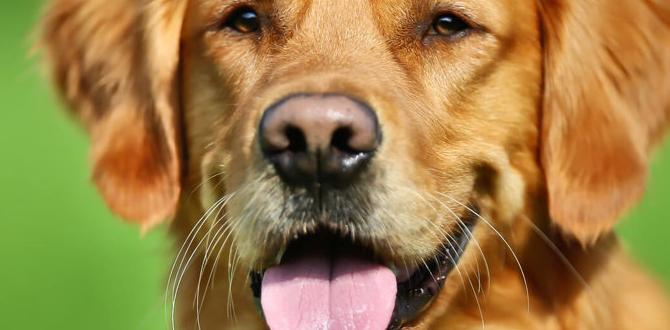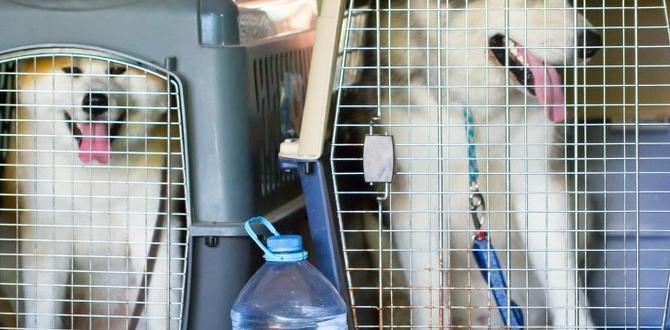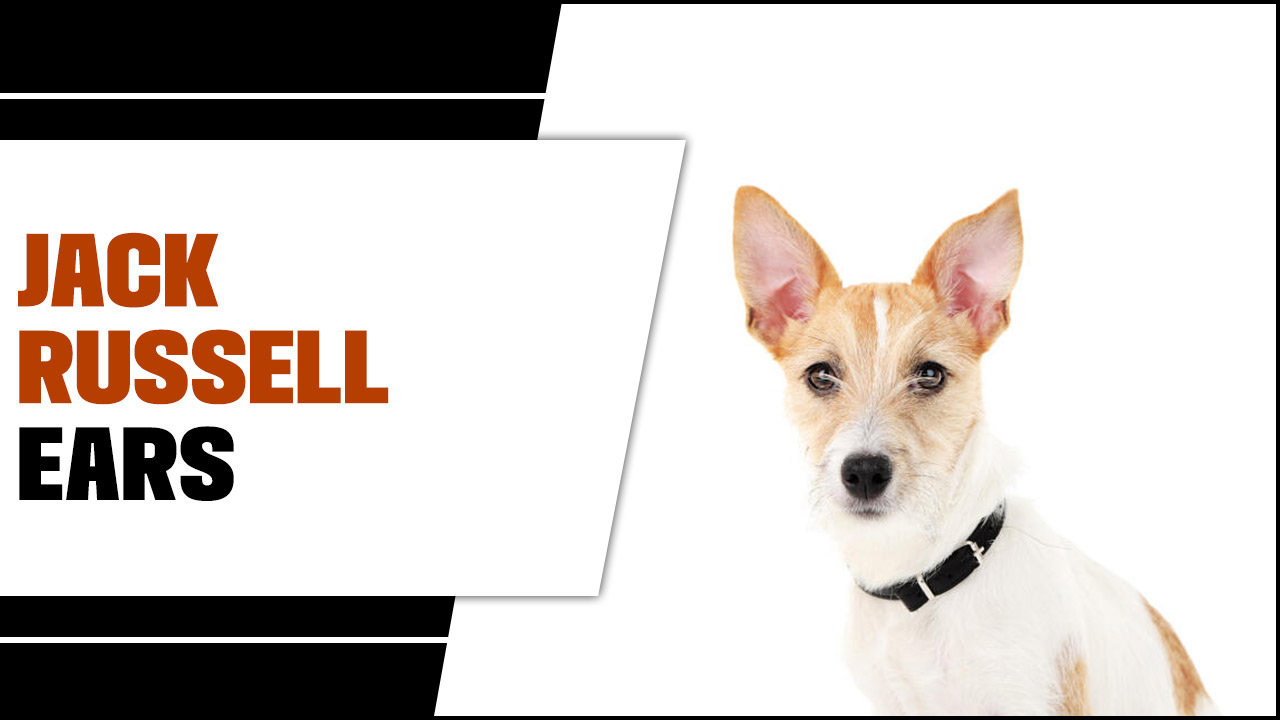Have you ever watched a dog shy away from new people or situations? It can be tough to see your furry friend feel scared or unsure. But what if I told you that you can help make your dog more confident? Many dog owners face this issue, and it’s more common than you think.
Imagine a pup who happily greets guests at the door or eagerly plays with other dogs at the park. Sounds nice, right? Building your dog’s confidence can lead to a more joyful life for both of you. With a few simple steps, you can change how your dog feels about the world.
In this article, we will explore practical tips and tricks to make your dog more confident. From fun training exercises to creating a loving home environment, you’ve got the power to help your canine companion thrive. Let’s embark on this journey together and watch your dog grow into a more self-assured friend!
How To Make Your Dog More Confident: Tips And Strategies

How to Make Your Dog More Confident
Building your dog’s confidence can be a fun and rewarding journey. Start by creating a safe space where your pup feels comfortable. Socializing your dog with other pets helps them gain confidence too. Using positive reinforcement, like treats and praise, boosts their self-esteem. Did you know that agility training can also help? It’s not just exercise; it teaches them they can succeed! With patience and love, you can turn your shy dog into a playful and confident companion.Understanding Canine Confidence
Definition of confidence in dogs. Factors affecting a dog’s confidence levels.Confidence in dogs means they feel good about themselves and their abilities. A confident pup is ready to face new challenges, whether that’s barking at the mailman or jumping into a puddle. Several factors affect their confidence levels. These include socialization, past experiences, and even their breed. For instance, a shy pup might hide during thunderstorms, while a brave terrier might chase after that pesky squirrel without a second thought!
| Factor | Effect on Confidence |
|---|---|
| Socialization | Helps them feel safe around others. |
| Past Experiences | Good or bad moments shape their reactions. |
| Breed | Some breeds are naturally more confident than others. |
Signs of a Confident Dog
Behavioral traits of confident dogs. Comparison with fearful or anxious behaviors.Confident dogs show behaviors that make them stand out. They walk with their heads high, tails wagging like a flag, and their ears perked up. These pups can easily approach new people and places. In contrast, fearful dogs may slink away, tuck their tails, or cling to their owners like they’re a life jacket. It’s crucial to notice these traits: confidence is a happy dance, while fear can look like a puppy looking for a hiding spot.
| Confident Dog Traits | Fearful Dog Behaviors |
|---|---|
| Happy tail wagging | Tail tucked between legs |
| Curious exploration | Hiding or backing away |
| Eager to meet new friends | Avoids contact with people |
So, if your dog is strutting its stuff like a superstar, chances are it’s feeling pretty confident! Remember, a confident dog is often a happy dog, ready to take on the world— or at least the backyard.
Creating a Safe Environment
The importance of a stable home setting. Tips for minimizing stressors and distractions.A stable home is like a superhero cape for your dog. It helps them feel safe and secure. To create this cozy haven, keep noises low and avoid sudden surprises. Dogs can be scaredy-cats at times! Use comfy beds and toys to brighten their space. With a familiar routine, they will know what to expect. Remember, a calm environment is key to boosting their confidence!
| Tips for a Safe Home | Stressors to Avoid |
|---|---|
| Provide a cozy space | Loud noises |
| Stick to a routine | Sudden changes |
| Use familiar toys | Overcrowded spaces |
Socialization Strategies
Importance of socialization for building confidence. How to safely introduce dogs to new experiences and other animals.Socialization helps dogs build confidence. Meeting new people and animals can make them feel strong and happy. Introduce your dog to new experiences step by step. Start with quiet places and then move to busier spots. Let your dog sniff and explore at their pace.
- Use treats to create positive feelings.
- Watch for signs of stress, like hiding or barking.
- Talk softly to reassure them.
Regular socialization can lead to a more confident and well-adjusted dog. Your furry friend will thank you!
Why is socialization important for dogs?
Socialization is key to building a dog’s confidence. It teaches them how to behave in different situations and helps them feel secure. A well-socialized dog is happier and less fearful.
Training Tips to Boost Confidence
Specific training exercises to build selfesteem. Incorporating play and mental stimulation into training.Building your dog’s confidence can be fun! Try these specific training exercises:
- **Basic Commands:** Teach sit, stay, and come. Use treats and praise to encourage learning.
- **Obstacle Course:** Set up a simple course. Let your dog jump, weave, and crawl. This boosts confidence through play.
- **Hide and Seek:** Hide treats around the house. Let your dog find them. It’s both fun and mentally stimulating.
Incorporate playtime into each session. Keep it light! A confident dog enjoys learning and playing. Mix training with games. This will make learning exciting.
How can play help with dog training?
Play helps dogs learn faster by making training fun. Games allow dogs to express themselves and build trust with their owners.
Establishing a Routine
Benefits of a consistent daily routine. How routines can contribute to a dog’s sense of security.Having a daily routine can be a dog’s best friend! Dogs thrive on predictability. A consistent schedule lets them know, “Hey, I’m getting my dinner at 6 PM, and playtime is right after!” This boosts their confidence. Routines provide a sense of security, which is like a warm blanket for their hearts. Plus, less chaos means fewer surprises. And who likes surprises, anyway? Just ask a dog who’s scared of vacuum cleaners!
| Routine Activity | Benefit |
|---|---|
| Feeding | Knows when to expect meals |
| Walks | Helps with energy release |
| Playtime | Builds social skills and confidence |
Addressing Fear-based Behavior
Identifying common fears in dogs. Strategies for desensitization and counterconditioning.Dogs have their own worries, just like us! Common fears include loud noises, strangers, and even other dogs. Knowing what scares your pup is the first step to helping them feel braver. You can use fun strategies like desensitization and counterconditioning. This means you gradually expose them to their fears while giving them treats. For example, if your dog fears loud noises, try playing a soft sound while offering treats. Over time, your dog will feel more confident. Here’s a helpful table:
| Fear | Desensitization Strategy |
|---|---|
| Loud Noises | Play sounds while rewarding them |
| Strangers | Introduce them slowly, with treats |
| Other Dogs | Observe from a distance, then get closer |
Remember, patience is key! Celebrate small wins along the way. Soon, your furry friend will strut around like they own the park!
When to Seek Professional Help
Signs that your dog may need professional training. How to find a qualified dog trainer or behaviorist.Every dog is unique. Some may need a little extra help. Look for signs like:
- Fear of new places or people
- Growling or barking at others
- Refusing to play or socialize
- Being too shy or anxious
How do I know if my dog needs training?
If your dog shows fear or aggression, it’s a good idea to consult a trainer. Dogs may also need help if they don’t listen or have trouble with basic commands.
Conclusion
In conclusion, helping your dog become more confident can be fun and rewarding. Start by socializing them with other dogs and people. Use positive reinforcement to reward good behavior. Also, teach them new tricks to boost their self-esteem. Remember, patience is key. For more tips and activities, check out books or articles about dog training. Let’s make our pups shine!FAQs
What Exercises Or Activities Can I Do With My Dog To Build Their Confidence In Social Situations?You can take your dog to a park to meet other dogs and people. Start with short visits so your dog feels safe. Play fun games like fetch or hide-and-seek to make it enjoyable. Use treats and praise when they do well. This helps your dog feel more confident around others!
How Can Positive Reinforcement And Training Techniques Help Boost My Dog’S Self-Esteem?Using positive reinforcement means giving your dog treats or praise when they do something good. This helps them feel happy and proud. When you train your dog with these rewards, they learn new tricks and feel more confident. The more you practice, the better they get. A dog with high self-esteem is more playful and loves being around you!
Are There Specific Obedience Commands That Can Enhance A Dog’S Confidence When Learned And Practiced Regularly?Yes, there are commands that can help your dog feel more confident. Commands like “sit,” “stay,” and “come” are great to practice. When your dog learns these, they feel like they are doing a good job. Regular practice helps them understand what you want, making them more sure of themselves. This builds their confidence over time!
How Can I Help My Fearful Dog Feel More Secure In Unfamiliar Environments?To help your scared dog feel safe in new places, stick close to them. Bring their favorite toys or blanket. Move slowly and calmly, so they can relax. Speak softly and give them treats when they explore. Remember, it’s okay to take breaks if they need time to feel better.
What Role Does Proper Socialization Play In Developing A Confident Dog, And How Can I Ensure My Dog Has Positive Experiences With Other Animals And People?Proper socialization helps your dog feel safe and happy around other animals and people. When we introduce our dogs to new experiences, they learn that the world is good. To help your dog have positive experiences, start by taking them to parks or playgroups. Let them meet friendly dogs and gentle people. Always reward your dog with treats and praise for good behavior to make it fun!
Meet Elyse Colburn, the devoted canine companion and storyteller behind the enchanting world of “Tales, Tails, and Adventures Unleashed.” A passionate dog enthusiast with a heart full of paw prints, Elyse Colburn shares heartwarming tales and insightful adventures, celebrating the joy, loyalty, and endless antics that make every dog a true hero. Join Elyse Colburn on this tail-wagging journey, where every post is a love letter to our four-legged friends.








